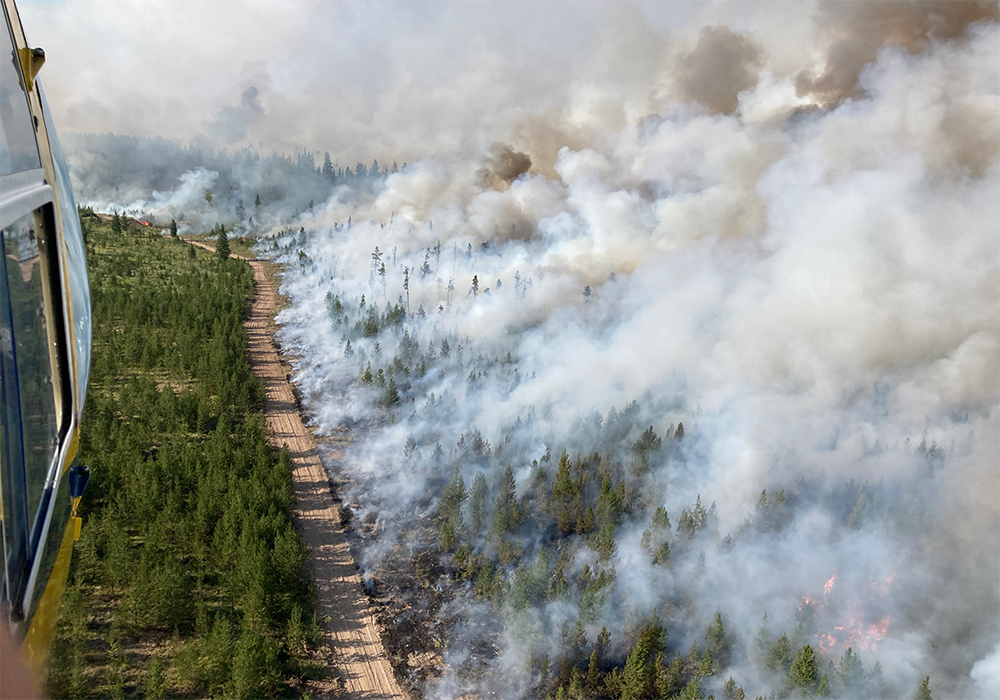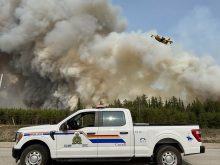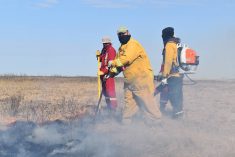A fire has been burning for at least a month in the region where Ben Albietz ranches near Lillooet, B.C. It continues to destroy range for his cattle and he knows he has already lost about 20 percent of his herd.
Without help to obtain feed and reseed burned grazing land, his outlook is as grey as the smoke-filled skies that permeate much of the province’s southeast interior.
“I’ve been feeding cows for a month. I have used all available pasture. There’s no way I’m going to be able to put cattle back on my pasture… the range is still on fire,” Albietz told those on an Aug. 4 virtual town hall organized by the British Columbia Cattlemen’s Association.
Read Also

Farming Smarter receives financial boost from Alberta government for potato research
Farming Smarter near Lethbridge got a boost to its research equipment, thanks to the Alberta government’s increase in funding for research associations.
“The fire has taken minimum 20 percent of my herd, the better half because I kept the late calvers home because of attacks from the wolves, so I’ve been gutted harder on my genetics that way,” he said, adding that “unless there’s a miracle” he thinks the herd will be decimated further as fires continue to rage.
“If we don’t get some help, we’re going belly up.”
He spoke on a day when 32 wildfires of note — defined as those that are highly visible or pose a potential threat to public safety — were burning in B.C. Since April 1, fires have burned about 1.4 million acres in the province.
Albietz is one of many B.C. ranchers facing similar losses of cattle and grazing land. Many won’t know how many animals have been lost until fires have abated enough to round up the remainder this fall.
There is help on the way.
The town hall was organized to tell affected ranchers about programs in place and work being done to help them through the smoky-looking future.
Graham Knox, director of emergency management and climate change with the B.C. government, said criteria will soon be finalized to launch an emergency hay program and details are expected shortly.
BCCA general manager Kevin Boon said a horse and rider program is also nearly ready to launch. It will provide ranchers with the names of people with horses or quads who will help round up cattle when they must be moved out of harm’s way.
Boon said the B.C. government will pay $350 per day for each horse-and-rider unit. The payment does not apply to family members or employees of the affected rancher.
Perhaps even more important to B.C. ranchers is the work BCCA is doing with the government and wildfire officials to improve communication when fire threatens their homes or range.
It has set up a framework for rancher liaisons to be part of the official incident management team to provide information to both ranchers and the dire responders.
Boon said the BCCA has had several meetings to discuss ways ranchers can launch an initial attack on new fires without repercussions from officials. Ranchers’ first step, of course, is to report the fire before attempting to fight it, said Boon. Reporting the location and people trying to fight it will prevent inadvertent dumping of fire retardant or water upon those on the ground.
A feed assistance program is being readied to get hay and feed to stock during the transition period between when they are displaced from crown or private range and when a permanent relocation is found, said Boon.
The BCCA is also working with the Canadian Cattlemen’s Association to develop plans for the next grazing season, and in the meantime, the national group is lobbying the federal government for assistance through AgriRecovery.
Brady Stadnicki, manager of policy and programs for the CCA, said the national cattle group has met twice in recent weeks with federal agriculture minister Marie-Claude Bibeau. It has asked that the federal tax deferral program be extended over multiple years rather than a single tax year.
A list of eligible regions for tax deferral was announced July 22, that cited 24 regions in B.C., and more were added Aug. 5 encompassing additional regions in B.C. and across the West.
Ranchers may have to sell breeding stock into a depressed market because many beef producers across the West are selling cattle due to widespread drought and feed shortages. The cost of new stock is likely to be much higher when the time comes to restock, Stadnicki said.
Bibeau was receptive to the idea, he added, and the CCA intends to continue pushing for it.
However, the first priority is an immediate interim feeding program.
“Work is being done around the clock to get funding rolled out in short order and we will keep advocating to get these support programs rolled out as quickly as possible.”
He also said the national group has asked for support that at least matches that being offered to American cattle producers through the Livestock Forage Disaster Program, and that assistance be provided quickly.
In the worst-affected areas of the U.S., the American program offers about C$200 per breeding animal.
“I would note that this amount may need to be higher in value to actually cover the extraordinary feed costs or reflect the provincial feed situation and we support the provinces in their requests for assistance at a higher per head value,” said Stadnicki.
The stress level among affected B.C. ranchers was evident in the town hall’s question and answer session.
David and Bonnie Haywood-Farmer have experienced three fires in the last six weeks on their range in the Kamloops area. Their cattle are now in a temporary feedlot.
They questioned the amount of fire guard used by the wildfire service and noted the extensive damage it does to remaining grassland and fencing.
“I’ve never been in a fire season when there’s been so damn much guarding used and I don’t know if the process to fight fires is different but as a cattleman, I’m really, really concerned at what this extra guarding that’s being done is going to do to our grassland and our ranges,” said David Haywood-Farmer.
Ian Meier, executive director of the B.C. Wildfire Service, said there are 3,612 firefighter personnel this year, compared to more than 5,000 that fought fires in 2018. That has hampered the provincial response.
Meier said fires in other provinces and the U.S. have prevented other jurisdictions from providing personnel as they have in the past.
The numbers concerned Haywood-Farmer.
“I’m really frustrated at how some of these fires in my area have gotten so damn big and so unmanageable. … How do you stop those monsters?”
For more content related to drought management visit The Dry Times, where you can find a collection of stories from our family of publications as well as links to external resources to support your decisions through these difficult times.



















